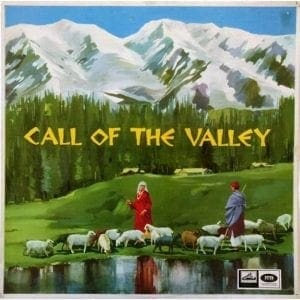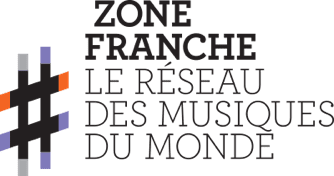For Indians, music goes back to the very origin of the world. Over the centuries, it has developed a strong identity that has allowed it to welcome countless foreign influences without losing anything of its remarkable essence.
In Indian mythology, the “aum” sound vibration is said to have preceded life itself and given rise to the gods. The Hindu pantheon is filled with musicians: to the beat of a drum, Shiva brings the universe to life with his dance; Saraswati, daughter and wife of Brahma and goddess of artists, plays the veena, the ancestor of Indian chordophones; Krishna, a human avatar of Vishnu, seduces the faithful and young women with the sound of his flute. “Nada Brahma”, the sound is divine and the music has a sacred essence.
The first music identified in India came in the form of devotional songs that appeared in the sacred Veda texts between 1500 and 800 BCE.
Many popular forms of singing, in which the mystical dimension was often present, subsequently developed and a sophisticated musical system was put in place.
Jasraj Meera Bhajan
Classical music – Hindustani in the north and Carnatic in the south – is monodic music that uses neither chords nor overlapping notes, but takes advantage of the intervals between two tones. They share a common ancient foundation based on the use of a sound halo obtained by drone instruments and the raga principle. A raga is a framework through which the musician can express themselves while respecting precise notes, intentions and directions.
What separates these two forms of music are the contributions provided by the Muslim civilisation through Arab, Turkish and Persian conquests in the north of the country. During the period of the Mughal Empire (1527–1707), North India experienced a cultural and artistic golden age. New sources of inspiration and instruments appeared, such as the tabla, pakhavaj, sarod and sitar.
In the 19th century, European colonisation, by the British in particular, introduced new instruments to the Indian musical landscape. Brass bands were formed in a number of regions, the violin found its place in Carnatic music and the harmonium was adopted to support forms of devotional song, such as Qawwali and Bhajan. In 1940, the Hawaiian musician Tau Moe introduced the slide guitar into North India, where some soloists chose it as an instrument.
Debashish Bhattacharya (slide guitar)
Indian music also began to be exported to the West, where it came together with musical styles performed there and attracted a great many foreign artists.

In the 1930s, before following a traditional education with his guru, the influential sarod-player Allauddin Khan, Ravi Shankar was a member of his brother Uday’s dance troupe. Despite being only about ten years old, he danced, played various instruments and travelled the world. He discovered the great classical performers in Europe and jazz pioneers in the United States.
Ravi Shankar and Yehudi Menuhin
In the 1960s, he made friends with the classical violinist Yehudi Menuhin, with whom he collaborated throughout their lives. In late 1964, Shankar met John Coltrane, to whom he passed on some keys to the system of Hindustani music. Thanks to his friendship with The Beatles’ George Harrison, Shankar increased his audience and dabbled in the world of pop music. He played at Monterey (1967) and Woodstock (1969) and inspired Harrison to organise a charity concert for Bangladesh in 1972.
Ravi Shankar at Monterey Pop (67) with Alla Rakha (tablas)
Throughout his career, Shankar played Hindustani music and experimented with other forms. He wrote symphonies and concertos for the sitar and orchestra. In 1987, on the album Tana Mana, he used electronic instruments with Harrison and Peter Baumann (Tangerine Dream). The following year he recorded with Russian musicians (Inside the Kremlin) and, in 1989, cemented his relationship with the minimalist composer Philip Glass (Passages).

Of course, Ravi Shankar was not the only Indian musician to link East and West. In the 1950s, Bollywood composers began to adopt the new musical trends of the world to be used in musicals. In 1967, the santoor-player Shiv Kumar Sharma, the guitarist Brij Bhushan Kabra and the flautist Hariprasad Chaurasia created The Call of the Valley, the first Indian concept album about a day in the life of a shepherd. In 1968, the tabla-player Alla Rakha, a frequent accompanist of Shankar and father of Zakir Hussain, recorded with the jazz drummer Buddie Rich.
Remember Shakti (Shiv Kumar Sharma (santour), John McLaughlin (guitar), Zakir Hussain( tabla), V.Selvaganesh (drums)
In 1974, the English guitarist John McLaughlin founded the group Shakti with a number of Indian virtuosos.
Talvin Singh
In the 1990s, in contact with the British rock, hip-hop and electro scenes, musicians from the sub-continent’s diasporas formed the Asian Underground movement, in which Talvin Singh, Nitin Sawhney and FunDaMental were key figures.
Malkit Singh « Mida Touch » Bhangra
By adopting elements of Western dancefloor music, Punjabi musicians in London reinvented bhangra, a dance and music that traditionally accompanied harvest festivals, before adopting these new standards on their own soil. Traditional musicians were also inspired by techniques from the West, such as the Barmer Boys of Rajasthan, who added vocal beatbox parts to their singing, which were remixed by electro DJs such as Ravana from New Delhi.
Anoushka Shankar & Pepe Habichuela (Traveller)
Ravi Shankar trained many musicians, including his daughter, the sitarist Anoushka Shankar, the heir to her father’s repertoire. As a composer, she follows a personal path in which East and West form a dialogue. She also collaborates with her half-sister Norah Jones, Karsh Kale and Nitin Sawhney. In 2011, Traveller was a magnificent exploration of the meeting points between India and flamenco.
Ghazal (Shujaat Hussain Khan & Kayan Kahlor
Ravi Shankar may have been the most famous sitar-player in the world, but in his home country many enthusiasts held his rival Villayat Khan in higher esteem. This incredible sitar-player remained loyal to Hindustani music until his death in 2004, but his son Shujaat, a gifted sitarist, boasts an extremely modern sound. He founded the duo Ghazal with the Iranian kamancheh-player Kayan Kaylor (Ghazal), carried out a remarkable fusion with music from South India and West Africa in the Strings Tradition project, and has collaborated with American jazz musicians.
This history is, of course, incomplete but, most importantly, also far from coming to an end or ceasing to surprise us.


